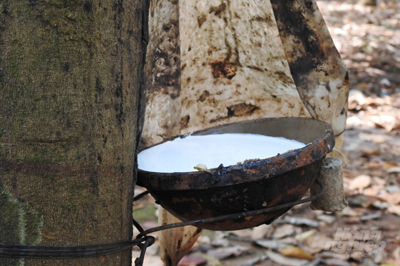Natural rubber market forecast at $30 billion by 2033
Pune, India – The natural rubber market is anticipated to witness significant growth, reaching a value of US$ 18,270.6 million by 2023 and maintaining a steady CAGR of 5.4% through 2033 according to Future Market Research. This growth is primarily fueled by the expanding application scope of natural rubber, particularly in sectors such as construction, automotive, textiles, pharmaceuticals, and defense.
The demand for natural rubber continues to rise due to its affordability, lightweight properties, and suitability for a wide range of applications. From insulating materials to tires for cars and airplanes, natural rubber remains indispensable across diverse sectors, driving its consumption to an estimated value of US$ 30,914.3 million by the end of 2033.
Natural rubber, known for its exceptional elasticity and durability, serves as a vital component in various automotive applications including tires, floor mats, window seals, and shock absorbers. With ongoing technological advancements and a surge in demand for passenger vehicles, there has been a notable increase in the utilization of natural rubber within the automotive industry. For example, the International Organization of Motor Vehicle Manufacturers reports a projected production of 57 million passenger vehicles worldwide in 2021, compared to 55.9 million units in 2020. This uptick in vehicle manufacturing translates to a higher demand for natural rubber polymers, particularly for tire and automotive accessory production. Consequently, the natural rubber sector is poised for significant growth and prosperity.
The expanding global population and rapid urbanization trends are fueling growth in the building and construction sector worldwide. Major players in these industries are directing significant investments into research and development efforts aimed at enhancing material quality while simultaneously reducing costs. In light of these developments, natural rubber is emerging as a valuable resource within the construction industry, offering both strength and economic advantages, For instance, natural rubber polymers and isoprene compounds are blended with cement to create bonding agents used in repairing concrete and plastered surfaces. With the surge in residential and commercial construction projects driven by the growing demand for housing and infrastructure enhancements, the utilization of natural rubber in construction applications is expected to witness a notable increase.
Natural rubber poses risks to individuals with latex allergies, potentially triggering severe allergic reactions like anaphylactic shock, which can be life-threatening. Moreover, the production process of natural rubber involves significant water, energy, and chemical usage. The release of these substances as waste and effluents contributes to environmental concerns, including chemical-laden wastewater and thermal emissions. These adverse effects on human health and the environment may curtail the widespread use of natural rubber, potentially hindering the growth of the global natural rubber industry.

